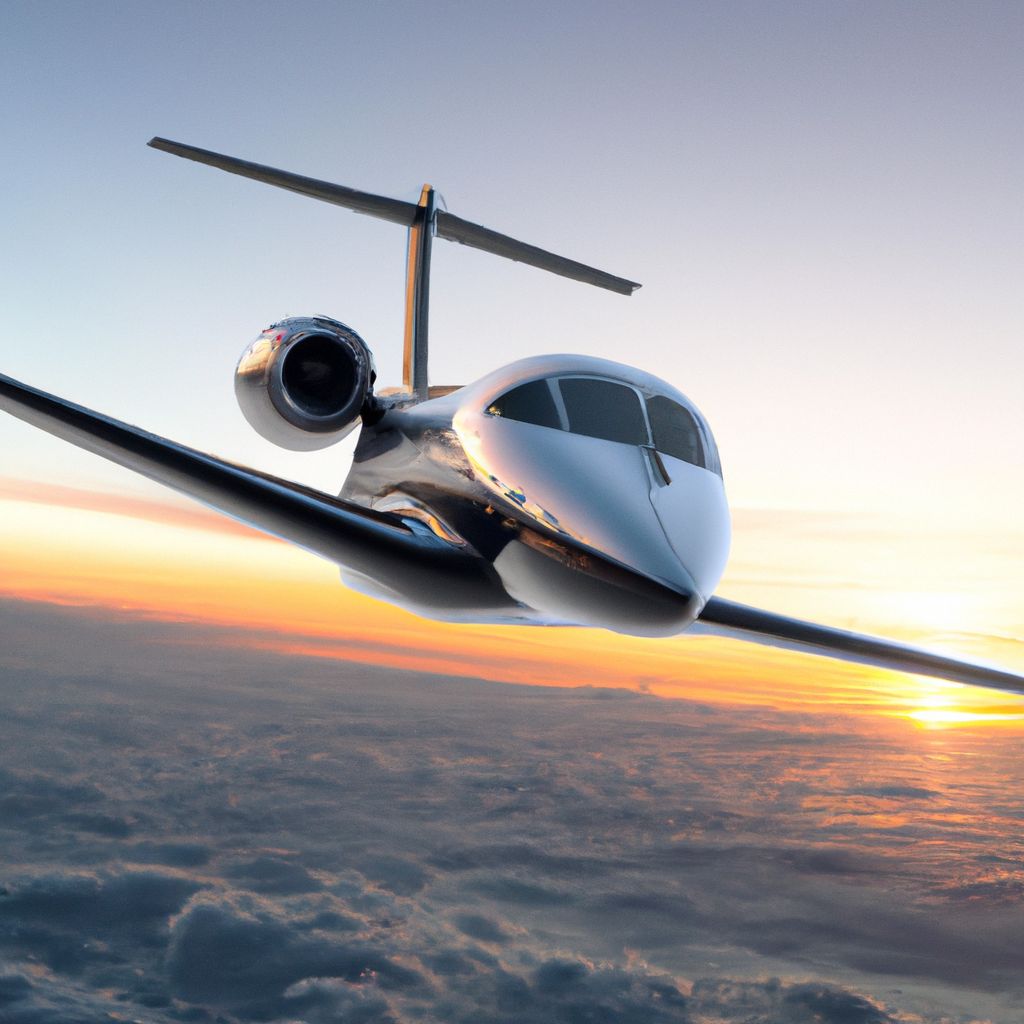
The aviation industry has seen dramatic growth and innovation over the decades, shaped by a few key players. Today, the top airplane manufacturers stand at the forefront of this evolution, delivering cutting-edge technology and pushing the boundaries of air travel. Companies like Airbus and Boeing have forged their legacies through a combination of engineering excellence and strategic vision, becoming giants in both commercial and military aviation.
A brief history of these manufacturers reveals their significant milestones. Airbus, established in 1970, broke new ground by introducing the A300, the world’s first twin-engined wide-body aircraft. Meanwhile, Boeing, which dates back to 1916, has been a leader in aviation by creating iconic models like the 747, revolutionizing long-distance travel. Understanding these companies’ journeys highlights not only their impact on modern aviation but also how they continue to shape the industry today.
Beyond these giants, other manufacturers are also making their mark. Companies like Lockheed Martin and Northrop Grumman contribute to both commercial and military sectors, emphasizing the diverse nature of airplane manufacturing. Each player adds to a rich tapestry of history and innovation, making this field both exciting and constantly evolving.
The Dawn of Aviation Manufacturing
The beginning of aviation manufacturing marked a significant moment in history. This era laid the groundwork for future advancements in flight and aircraft design. Key figures and developments shaped the industry, allowing it to evolve rapidly.
The Wright Brothers’ Legacy
The Wright Brothers, Orville and Wilbur, were pivotal in the early days of aviation. In 1903, they achieved the first powered flight in Kitty Hawk, North Carolina. Their aircraft, the Wright Flyer, was a biplane made of wood and cloth, showcasing innovative design for its time.
Their successful flight lasted just 12 seconds but opened doors for future aviation endeavors. This achievement inspired inventors and engineers worldwide. The brothers continued to refine their designs, leading to better control and stability in flight.
By 1905, the Wright Brothers created the Wright Flyer III, capable of sustained flight. Their contributions laid the foundation for modern aviation, influencing future manufacturers. Their principles of flight control are still fundamental in aircraft design today.
Expanding Horizons in Early 20th Century
Following the Wright Brothers, the early 20th century saw a surge in aviation manufacturing. This was driven by competition and the needs of warfare. Nations began investing in aircraft for both military and civilian purposes.
In 1909, Louis Blériot became the first person to fly across the English Channel. His aircraft, the Blériot XI, demonstrated the possibilities of aviation beyond mere flight tests. Manufacturers began to focus on building planes that were not just functional but could also carry passengers and cargo.
World War I accelerated aircraft production, with companies like Sopwith and Fokker leading in military designs. Manufacturers embraced assembly line techniques, which enabled rapid production of aircraft. This expansion laid the groundwork for the commercial aviation industry in the years to come.
Post-War Advancements and the Jet Age
After World War II, the aviation industry saw significant changes with the introduction of jet engines and advanced aircraft designs. This era, known as the Jet Age, marked a transformative time for airplane manufacturing. Notable companies emerged as leaders in innovation and production during this period.
Boeing: The Rise of a Giant
Boeing became a dominant player in the post-war aviation landscape. The introduction of the Boeing 707 in 1958 revolutionized commercial air travel. It was the first large-scale passenger jet, capable of flying long distances at higher speeds.
The demand for faster and more efficient aircraft increased, allowing Boeing to expand its operations. The 707’s success led to a surge in orders from airlines worldwide. Boeing quickly established a reputation for reliability and advanced technology, which set the foundation for future models.
Douglas Aircraft Company and the DC Lineage
Douglas Aircraft Company played a crucial role during the Jet Age with its DC series of aircraft. The Douglas DC-8, launched around the same time as the 707, was a major competitor in the commercial market. It offered similar advancements in range and efficiency.
The DC lineage included several models that catered to different market needs, such as the DC-9 and DC-10. These planes were known for their durability and comfort, making them popular choices for airlines. Douglas’s commitment to innovation helped shape modern aviation and solidify the company’s legacy in aircraft manufacturing.
Lockheed’s Innovations and Influence
Lockheed made significant contributions to the Jet Age with its iconic aircraft designs. The Lockheed Constellation, introduced in the late 1940s, featured a sleek profile and increased passenger comfort. It became a favorite among international airlines.
In the 1960s, Lockheed launched the L-1011 TriStar, equipped with advanced technology and spacious cabins. This aircraft faced tough competition but showcased Lockheed’s engineering abilities. The company focused on innovative designs that enhanced aerodynamics and safety.
Through their pioneering efforts, Lockheed established itself as a key player in commercial aviation, influencing design standards that are still relevant today.
Modern Titans of Aerospace
The aerospace industry is shaped by a few key companies that lead in innovation and production. This section explores major manufacturers that play vital roles in both commercial and regional aviation, highlighting their unique contributions and market positions.
Airbus and the Global Market
Airbus stands as a prominent player in the aerospace sector, known for its wide range of commercial aircraft. Founded in 1970, the company has continually expanded its influence in the global market. Its flagship product, the A320 family, is renowned for efficiency and comfort.
In 2021, Airbus produced 611 jets, showcasing its robust manufacturing capabilities. The company is not only focused on commercial aviation but is also a significant contributor to defense and space sectors. Its collaboration with nations on military projects further solidifies its status.
Airbus consistently implements advanced technologies to improve fuel efficiency and reduce emissions. This commitment to sustainability attracts airlines looking to align with environmental goals, making Airbus a key player in the future of aviation.
Bombardier and Regional Jets
Bombardier specializes in regional jets and business aircraft, with a rich history dating back to 1942. Known for models like the CRJ series, Bombardier has carved out a niche in regional travel.
These aircraft are designed for short-haul flights, offering flexibility for airlines operating in regional markets. Bombardier’s focus on efficiency and passenger comfort has enabled it to deliver aircraft that meet the needs of smaller airlines.
In recent years, Bombardier has strategically shifted its focus towards business jets, emphasizing its expertise in producing luxury and high-performance aircraft. This pivot highlights the company’s adaptability in a competitive market, positioning it as a leading name in the regional aerospace segment.
Embraer’s Niche in Airliners
Embraer is a Brazilian manufacturer that has made a significant impact in the regional and executive aircraft markets. Established in 1969, Embraer is best known for its E-Jet family, which has become a favorite among regional airlines.
The E-Jet series offers efficient seating configurations and advanced aerodynamics, making them well-suited for short to medium-haul routes. Over 1,400 units have been delivered globally, reflecting the aircraft’s popularity and reliability.
Embraer focuses on innovation, incorporating the latest technology into its aircraft designs. By maintaining a strong presence in both the commercial and executive sectors, Embraer continues to demonstrate its expertise and commitment to the aerospace industry.
The Future of Airplane Manufacturing
The future of airplane manufacturing focuses on two main areas: sustainability and the integration of next-generation technologies. These factors will shape how aircraft are developed, produced, and operated in the coming years.
Sustainability and Aviation
Sustainability is becoming a critical priority for airplane manufacturers. The industry is responding to climate concerns by developing more fuel-efficient aircraft and exploring alternative fuels, such as biofuels and hydrogen.
Many manufacturers are setting ambitious goals to reduce carbon emissions. For example, some companies aim for net-zero emissions by 2050. They are also investing in materials that are lighter and more recyclable, which can lead to decreased fuel consumption and waste.
In addition, innovative designs are emerging. Companies are researching electric and hybrid propulsion systems. These technologies could significantly lower the environmental impact of flying, making air travel more sustainable.
Next-Generation Technologies
Next-generation technologies are transforming airplane manufacturing. Automation and digital manufacturing tools are at the forefront, allowing for faster production times and more precise quality control.
3D printing is increasingly used for creating aircraft parts. This process reduces waste and can shorten supply chains, enhancing efficiency. Advanced materials, such as composites, are also being developed to improve aircraft performance and durability.
Moreover, artificial intelligence (AI) is beginning to play a role in design and maintenance. AI can analyze data to optimize operations and predict maintenance needs before issues occur. This shift not only enhances safety but also reduces costs for airlines.

Leave a Reply